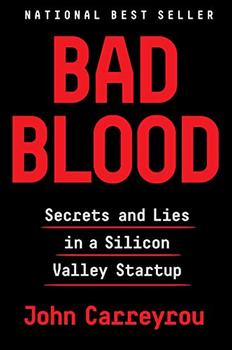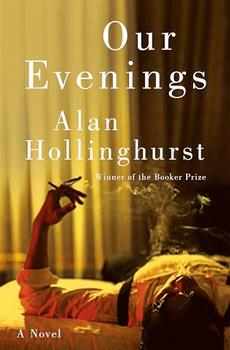Summary | Excerpt | Reviews | Beyond the Book | Readalikes | Genres & Themes | Author Bio

Secrets and Lies in a Silicon Valley Startup
by John CarreyrouPrologue
November 17, 2006
Tim Kemp had good news for his team.
The former IBM executive was in charge of bioinformatics at Theranos, a startup with a cutting-edge blood-testing system. The company had just completed its first big live demonstration for a pharmaceutical company. Elizabeth Holmes, Theranos’s twenty-two-year-old founder, had flown to Switzerland and shown off the system’s capabilities to executives at Novartis, the European drug giant.
“Elizabeth called me this morning,” Kemp wrote in an email to his fifteen-person team. “She expressed her thanks and said that, ‘it was perfect!’ She specifically asked me to thank you and let you all know her appreciation. She additionally mentioned that Novartis was so impressed that they have asked for a proposal and have expressed interest in a financial arrangement for a project. We did what we came to do!”
This was a pivotal moment for Theranos. The three-year-old startup had progressed from an ambitious idea Holmes had dreamed up in her Stanford dorm room to an actual product a huge multinational corporation was interested in using.
Word of the demo’s success made its way upstairs to the second floor, where senior executives’ offices were located.
One of those executives was Henry Mosley, Theranos’s chief financial officer. Mosley had joined Theranos eight months earlier, in March 2006. A rumpled dresser with piercing green eyes and a laid-back personality, he was a veteran of Silicon Valley’s technology scene. After growing up in the Washington, D.C. area and getting his MBA at the University of Utah, he’d come out to California in the late 1970s and never left. His first job was at chipmaker Intel, one of the Valley’s pioneers. He’d later gone on to run the finance departments of four different tech companies, taking two of them public. Theranos was far from his first rodeo.
What had drawn Mosley to Theranos was the talent and experience gathered around Elizabeth. She might be young, but she was surrounded by an all-star cast. The chairman of her board was Donald L. Lucas, the venture capitalist who had groomed billionaire software entrepreneur Larry Ellison and helped him take Oracle Corporation public in the mid-1980s. Lucas and Ellison had both put some of their own money into Theranos.
Another board member with a sterling reputation was Channing Robertson, the associate dean of Stanford’s School of Engineering. Robertson was one of the stars of the Stanford faculty. His expert testimony about the addictive properties of cigarettes had forced the tobacco industry to enter into a landmark $6.5 billion settlement with the state of Minnesota in the late 1990s. Based on the few interactions Mosley had had with him, it was clear Robertson thought the world of Elizabeth.
Theranos also had a strong management team. Kemp had spent thirty years at IBM. Diane Parks, Theranos’s chief commercial officer, had twenty-five years of experience at pharmaceutical and biotechnology companies. John Howard, the senior vice president for products, had overseen Panasonic’s chip-making subsidiary. It wasn’t often that you found executives of that caliber at a small startup.
It wasn’t just the board and the executive team that had sold Mosley on Theranos, though. The market it was going after was huge. Pharmaceutical companies spent tens of billions of dollars on clinical trials to test new drugs each year. If Theranos could make itself indispensable to them and capture a fraction of that spending, it could make a killing.
Elizabeth had asked him to put together some financial projections she could show investors. The first set of numbers he’d come up with hadn’t been to her liking, so he’d revised them upward. He was a little uncomfortable with the revised numbers, but he figured they were in the realm of the plausible if the company executed perfectly. Besides, the venture capitalists startups courted for funding knew that startup founders overstated these forecasts. It was part of the game. VCs even had a term for it: the hockey-stick forecast. It showed revenue stagnating for a few years and then magically shooting up in a straight line.
Excerpted from Bad Blood by John Carreyrou. Copyright © 2018 by John Carreyrou. All rights reserved. No part of this excerpt may be reproduced or reprinted without permission in writing from the publisher.




There is no science without fancy and no art without fact
Click Here to find out who said this, as well as discovering other famous literary quotes!
Your guide toexceptional books
BookBrowse seeks out and recommends the best in contemporary fiction and nonfiction—books that not only engage and entertain but also deepen our understanding of ourselves and the world around us.